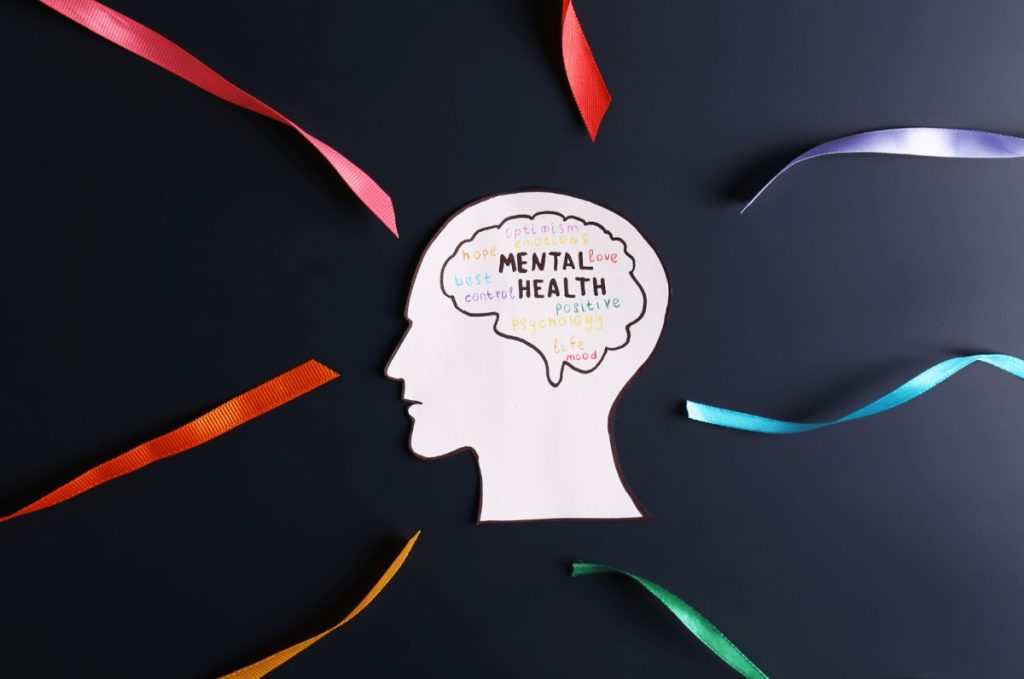
How Traumas Contribute to Obesity and Make it Hard to Lose Weight


How Traumas Contribute to Obesity and Make it Hard to Lose Weight
You can have impactful traumas even though you grew up in a perfect household and have never gone through major adverse life events.
Many difficult or chronic health issues involve a trauma component, whether you know it or not. When you can’t release those emotions and heal, they can manifest as weight gain or an inability to follow through with healthy habits.
In this article, we’ll explore how carrying trauma can lead to weight gain and give you some strategies to release some of your traumas and take control of your health.

What Are Traumas?
Trauma refers to the psychological and emotional response to a distressing or disturbing event or experience that exceeds your ability to cope. Traumatic events can take many forms and vary widely in their impact, depending on factors such as age, gender, cultural background, and previous life experiences.
Trauma doesn’t just have to be an experience that causes PTSD (post-traumatic stress disorder). You can have traumas from much milder situations that were overwhelming at that time, even if you grew up in a perfect family. For example:
- Your parents not being able to meet your emotional needs
- Being told you couldn’t eat certain foods
- Feeling as though receiving love was conditional based on how well you performed or what you looked like
Roughly 70% of adults in the United States experience trauma at some point. That makes you much more likely to experience trauma than not. Don’t underestimate the ability of distressing moments in your life to seriously impact your health.
Traumas can be direct, such as when you are personally involved in a traumatic event. Traumas can also be indirect, such as witnessing a traumatic event happening to someone else. These include:
- Natural disasters: hurricanes, earthquakes, or wildfires
- Acts of violence: physical or sexual assault, domestic violence, or terrorism
- Accidents: car crashes or industrial accidents
- Medical trauma: serious illness or injury or medical procedures that are painful or frightening
- Childhood trauma: abuse, neglect, or exposure to domestic violence or substance abuse
- Military trauma: combat exposure or military sexual trauma
Who Is Affected by Trauma?
Women are more likely to experience traumas like sexual assault or child abuse, while men are more likely to experience physical assaults, accidents, or combat.
Marginalized groups are also more likely to experience trauma. These include:
- Immigrants and refugees
- Racial minorities
- LGBTQI people
- People experiencing poverty
How your health responds to a traumatic experience is not based necessarily on the experience itself but on how you perceive that experience. Social factors can determine the level of impact trauma has on you.
A study investigated how social identity influences the way people respond to traumatic events. Participants with stronger social identities – feeling a greater sense of belonging – were more likely to use positive coping strategies, such as seeking social support, and had fewer negative emotional responses. Therefore, the more you feel like you belong to a group, the better your outcome may be after experiencing trauma.
What Does Trauma Look Like?
Trauma changes the way our brains work and can affect how we behave and interact with others. While trauma affects everyone differently, some common indicators include the following:
- Emotional: numbness, anxiety, fear, or anger
- Physical: sleep disturbances, muscle tension, easily startled
- Cognitive: misinterpreting situations, delusions, intrusive thoughts, memory loss
If you think that trauma may be what’s been standing in your way, read on for some strategies to help you move past some of the pain and on your way to weight loss.
The Links Between Traumas and Weight Gain

We often refer to dealing with stress and difficulties as “carrying extra weight.” And in reality, it often ends up this way. Experiencing trauma can make you more likely to gain weight.
Trauma can happen at any point in your life. Adverse childhood experiences (ACEs), potentially traumatic events that occur from ages 0-17, can leave a lasting impression on your body. Experiences can “biologically embed” and impact your brain architecture as well as your long-term mental and physical health.
A meta-analysis, including data from 118,691 adult subjects, explored the connection between ACEs and obesity. ACEs were measured using a survey covering childhood maltreatment and household dysfunction. Researchers determined that those with higher ACE scores (more trauma) had a 46% higher risk for obesity.
Based on this data, researchers provided possible explanations for this clear link.
Social Disruption
Experiencing low-income or income inequality along with ACEs increases your risk of obesity. Children growing up in these conditions are more likely to experience chronic stress leading to increased immune response and inflammation. Additionally, they may face food security concerns and decreased access to fresh, healthy food.
Health Behaviors
ACEs make you more likely to engage in a wide range of detrimental health behaviors, such as:
- Smoking
- Substance use
- Poor sleep habits
- Unhealthy diet
- Poor eating behavior
A study of 114 overweight or obese adult women examined the relationship between childhood trauma and eating behaviors. Based on the results of a questionnaire about eating habits and childhood experiences, researchers determined that:
- Childhood traumas accounted for over half of food addiction cases
- Trauma increases the likelihood of binge eating, overeating, or obsessive eating
Researchers believe food addiction is a coping mechanism in response to trauma. When you experience stress, your cortisol levels rise, which increases your appetite and desire for calorie-dense junk foods.
These behaviors can lead to emotional eating and a long-term pattern of overeating, thereby contributing to weight gain and obesity.
Chronic Stress Response
While everyone reacts to trauma individually, you may continue to experience the effects of trauma for weeks, months, and even years after. This causes your body to respond very similarly to when you experience chronic stress.
When you experience traumatic events, stress hormones like cortisol and adrenaline flood your body. This response helps the body respond to a perceived threat. When you repeatedly experience triggering events or never completely feel safe, the stress response can become chronic.
Chronic stress can lead to dysfunction of your hypothalamus-pituitary-adrenal (HPA) axis, also known as your stress response. This dysfunction leads to higher levels of cortisol circulating in your body. High levels of cortisol can lead to weight gain, particularly belly fat.
Mental Health

One of the most concerning mental health problems that arise from ACEs is depression, although ACEs can also lead to other mental health issues. A longitudinal study of 10,702 subjects explored the relationship between ACEs and depressed mood. Those who had experienced ACEs, especially child maltreatment and violence, had a much higher risk of depression.
Feeling depressed not only continues to activate your stress response and an increased appetite for junk food but also leads to lower energy and less physical activity. When you aren’t motivated to move, you decrease the opportunities to burn calories and manage your weight.
Pregnancy and Birth
Your experience in the womb and during birth can influence your likelihood of weight gain and obesity later in life. This is due to epigenetics. Epigenetics is the study of changes in gene expression that do not involve changes to the underlying DNA sequence.
Trauma can trigger epigenetic changes, which may help explain some of trauma’s long-lasting effects on mental and physical health. Some of these triggers known to lead to obesity include:
- High stress in pregnant mothers
- Birth trauma such as cesarean section, prolonged labor, or labor complications
- Premature birth
- Starvation of the mother leading to inadequate nutrition for the fetus
Prenatal stress can lead to changes in the developing fetal brain and stress response system. The stress can cause increased production of cortisol and long-lasting effects on overall health, metabolism, and body composition leading to obesity.
A literature review exploring the connection between prenatal stress and obesity highlighted some neural changes that can occur. Researchers determined that prenatal stress can reorganize the central neural pathways and program your weight setpoint to a predetermined higher weight, making it harder to achieve and maintain a healthy weight.
An additional study of more than 200 mothers explored the relationship between prenatal stress and child food choices. If your mother had more stress while she was pregnant with you, you’d be more likely to prefer less healthy foods than if your mother was less stressed during the pregnancy. You’d also be more likely to consume high-fat and high-sugar foods.
While not every infant who experiences trauma in utero or during birth will go on to develop obesity, it may be one of many factors that contribute to the development of obesity later in life. Knowing your birth history can be an essential piece of the puzzle to successfully losing weight and keeping your results long-term.
How to Release Trapped Emotions and Traumas for Weight Loss
Trauma might be the reason you are struggling to lose weight. It may be causing you to sabotage yourself or have difficulty sticking to a diet or exercise routine. Releasing some of those trapped emotions can be a significant step towards healing trauma and losing weight. We’ll introduce you to some science-backed strategies.
Emotional Freedom Techniques
Emotional Freedom Techniques (EFT), also commonly referred to as “tapping,” combines acupressure techniques with cognitive and exposure therapy. While tapping acupoints on your hands, face, and body, you focus on the issue or feelings you hope to resolve without experiencing emotional distress.
Over 100 clinical studies validate the effectiveness of EFT. A study of 203 subjects examined how EFT affects the central nervous system. After a 4-day EFT workshop, subjects experienced:
- Fewer feelings of anxiety and depression
- A decline in PTSD
- Reduced cravings
- Healthier cortisol levels
- Increased happiness
Follow-ups found that subjects even maintained these benefits for over a year after the workshop.
A great benefit of EFT is accessibility. While in-person EFT may be more effective, it’s also easily accessible online and can address the emotional barriers to weight loss.
In a one-year study of 76 participants, subjects followed a six-week online course in EFT treating emotional triggers connected to food. During the six weeks, participants lost an average of one pound per week and continued to lose 2 pounds monthly after the course ended.
Another study examined the effects of online EFT treatment on food cravings and weight management for eight weeks. After completing self-paced therapy, participants reported:
- Fewer food cravings
- Increased dietary restraint
- Decreased depression and anxiety
- Lower BMI (body mass index)
These benefits of the online EFT course lasted for at least two years.
Therefore, EFT may be an excellent long-lasting option to help reduce emotional barriers to weight management and healthy habits. It’s also easily accessible from the comfort of your home. After a quick search, you can find many videos to follow along with.

Cognitive Behavioral Therapy
The goal of cognitive behavioral therapy (CBT) is to help people change their thoughts and behaviors to improve their lives. Here are some ways that CBT can help you heal from trauma:
- Cognitive restructuring: Helps you identify negative thought patterns and then replace them with more positive ones.
- Exposure therapy: Gradually exposes you to reminders of your trauma in a safe environment to help you manage your emotional reactions and reduce distressing symptoms.
- Relaxation techniques: Teaches you techniques like deep breathing and progressive relaxation to help you feel calmer and more centered.
- Addressing avoidance: Avoiding trauma reminders can prevent you from processing and resolving it. CBT can help you face these reminders and increase your ability to cope with the emotions they bring up healthily.
A meta-analysis of trauma-focused CBT assessed its effectiveness in reducing trauma symptoms. Subjects of all ages, from preschoolers to adults, experienced a reduction in symptoms across a wide range of traumatic experiences. With a non-response rate of around 50%, it’s also important to consider cultural and individual differences.
Overall, CBT can help you develop more adaptive ways of thinking, coping, and managing your emotions, reducing the impact of traumatic experiences on your mental health and well-being. Whether it’s a good fit for you depends on how you respond. There’s no one-size-fits-all when it comes to emotional healing. Also, some people who have experienced severe traumas may find discussing past traumatic events or triggers to be too overwhelming.
Somatic Experiencing
The primary goal of somatic experiencing (SE) is to modify your trauma-related stress response. The idea behind SE is that when you experience stress or trauma, your body goes into fight or flight mode. When these situations are overwhelming, you experience a permanent overreaction of your stress response. This leaves your psychological and physical reactions incomplete, making it challenging to release the experience.
Rather than focusing on thoughts and behaviors, SE focuses on internal sensations. By doing this, you work to release the arousal produced by the trauma gradually. SE avoids reliving the traumatic experience.
A first-of-its-kind literature review of 16 studies focused on the effectiveness of SE as trauma therapy. Overall, SE positively impacted moods and emotions, as well as fatigue. Researchers determined that while research on SE is still in its early stages, it’s a very promising way to reduce traumatic stress.
Eye Movement Desensitization and Reprocessing Therapy (EMDR)
EMDR is a psychotherapy technique that focuses directly on treating traumatic memories. The idea behind this technique is that your traumatic experiences can get “stuck” in your brain, leading to changes in emotions, thoughts, and behaviors.
During EMDR therapy, both sides of the body are stimulated – such as with eye movements, tapping, or sounds. This stimulation supports communication between both sides of the brain while recalling traumatic memories. Throughout multiple therapy sessions, more positive thoughts and beliefs replace the traumatic memories.
Some researchers believe this bilateral communication allows subjects to process these memories without any adverse physical or psychological effects. Others believe that EMDR is successful because it heavily stimulates your short-term working memory and inhibits the harmful effects of trauma. Regardless of how it works, researchers agree that it’s effective.
A meta-analysis of the effectiveness of EMDR with PTSD patients examined 26 studies. Overall, patients experienced a significant decrease in symptoms of:
- Depression
- Anxiety
- PTSD
- Feelings of distress
It’s particularly effective when sessions last more than one hour and are conducted by a therapist. [R33]
Mindfulness-Based Interventions
Mindfulness-based interventions blend holding postures with paying attention to your breathing. The aim is to help with relaxation and release. Some examples include:
- Yoga
- Tai chi
- Qi gong
- Mindfulness meditation
The concept of mindfulness, rooted in Buddhist philosophy, identifies the cause of your suffering and deepens your awareness without judgment. By accepting yourself just as you are, you can begin to help let go of those emotions.
A meta-analysis examined the effects of mindfulness-based interventions on psychological trauma. Regardless of the type of trauma, all of the interventions (those listed above) helped improve the symptoms of trauma. These interventions are most effective when subjects continue the practice for more than eight weeks.
Extra benefits of some of these mindfulness-based strategies are their research-backed impact on weight loss.
A meta-analysis examined the effects of traditional Chinese exercises like tai chi and qi gong on obesity. Data from over 700 subjects demonstrated that compared to a control group, subjects practicing tai chi and chi gong experienced a decrease in:
- Body weight
- Body fat
- Waist and hip circumferences
- Waist-to-hip ratio
Yoga provides the same benefits as traditional Chinese exercises. A study surveying individuals practicing yoga focused on understanding the effectiveness of yoga on obesity. Researchers determined that success comes from the holistic weight loss approach.
Beyond the physical activity aspect, yoga can also shift individuals towards healthier eating habits. It also fosters a sense of community and provides role modeling, which can help people believe that their weight loss experience with yoga will be different from past experiences.
Aside from the emotional aspect of weight loss, we know that movement is king. The less physically active you are, the less likely you are to have weight loss success.
Finding a way to release trauma is highly individual. What works for your friend might not be a good fit for you. What’s most important is to find what’s best for you and take steps to release those trapped emotions.
Conclusion
Whether conscious or not, traumas have a way of creeping into our emotional and physical lives to make themselves known. If you believe that trauma might be a barrier to your weight loss or habit changes, start by exploring some of the strategies in this article. If you prefer to start on your own, explore EFT and some mindfulness-based interventions from the comfort of your home by following along with a video. Another great first step is to work with a trauma-informed health coach. A coach won’t be the end-all-be-all of your trauma healing, but they will recognize the signs of your traumas and know how to work with your patterns. A lot of non-compliance to healthy habits are not rooted in lack of discipline, so they should be able to help you with the deeper root causes. They should also know when to refer to the appropriate mental health professionals.
References
- Straussner SLA, Calnan AJ. Trauma through the life cycle: A review of current literature. Clin Soc Work J. 2014;42(4):323-335. doi:10.1007/s10615-014-0496-z
- How to Manage Trauma. Thenationalcouncil.org. Accessed May 13, 2023. https://www.thenationalcouncil.org/wp-content/uploads/2022/08/Trauma-infographic.pdf
- Center for Substance Abuse Treatment (US). Trauma Awareness. Substance Abuse and Mental Health Services Administration; 2014.
- Søegaard EGI, Kan Z, Koirala R, Hauff E, Thapa SB. Gender differences in a wide range of trauma symptoms after victimization and accidental traumas: a cross-sectional study in a clinical setting. Eur J Psychotraumatol. 2021;12(1):1975952. doi:10.1080/20008198.2021.1975952
- Smith HA, Markovic N, Danielson ME, et al. Sexual abuse, sexual orientation, and obesity in women. J Womens Health (Larchmt). 2010;19(8):1525-1532. doi:10.1089/jwh.2009.1763
- Muldoon OT, Haslam SA, Haslam C, Cruwys T, Kearns M, Jetten J. The social psychology of responses to trauma: social identity pathways associated with divergent traumatic responses. Eur Rev Soc Psychol. 2019;30(1):311-348. doi:10.1080/10463283.2020.1711628
- Wiss DA, Brewerton TD. Adverse childhood experiences and adult obesity: A systematic review of plausible mechanisms and meta-analysis of cross-sectional studies. Physiol Behav. 2020;223(112964):112964. doi:10.1016/j.physbeh.2020.112964
- Gardner R, Feely A, Layte R, Williams J, McGavock J. Adverse childhood experiences are associated with an increased risk of obesity in early adolescence: a population-based prospective cohort study. Pediatr Res. 2019;86(4):522-528. doi:10.1038/s41390-019-0414-8
- Marks C, Pearson JL, Zúñiga ML, Martin N, Werb D, Smith LR. Articulating the trauma-Informed Theory of Individual Health Behavior. Stress Health. 2022;38(1):154-162. doi:10.1002/smi.3068
- Legendre M, Sabourin S, Bégin C. Maladaptive eating behaviors and childhood trauma: A focus on food addiction. Cureus. 2022;14(7):e26966. doi:10.7759/cureus.26966
- Clemens V, Bürgin D, Eckert A, et al. Hypothalamic-pituitary-adrenal axis activation in a high-risk sample of children, adolescents and young adults in residential youth care – Associations with adverse childhood experiences and mental health problems. Psychiatry Res. 2020;284(112778):112778. doi:10.1016/j.psychres.2020.112778
- Hewagalamulage SD, Lee TK, Clarke IJ, Henry BA. Stress, cortisol, and obesity: a role for cortisol responsiveness in identifying individuals prone to obesity. Domest Anim Endocrinol. 2016;56 Suppl:S112-20. doi:10.1016/j.domaniend.2016.03.004
- Kim Y, Lee H, Park A. Patterns of adverse childhood experiences and depressive symptoms: self-esteem as a mediating mechanism. Soc Psychiatry Psychiatr Epidemiol. 2022;57(2):331-341. doi:10.1007/s00127-021-02129-2
- Codella R, Chirico A. Physical inactivity and depression: The gloomy dual with rising costs in a large-scale emergency. Int J Environ Res Public Health. 2023;20(2):1603. doi:10.3390/ijerph20021603
- Howie H, Rijal CM, Ressler KJ. A review of epigenetic contributions to post-traumatic stress disorder. Dialogues Clin Neurosci. 2019;21(4):417-428. doi:10.31887/DCNS.2019.21.4/kressler
- Entringer S. Impact of stress and stress physiology during pregnancy on child metabolic function and obesity risk. Curr Opin Clin Nutr Metab Care. 2013;16(3):320-327. doi:10.1097/MCO.0b013e32835e8d80
- Zheng X, Li R, Wang L, et al. The association of cesarean section with overweight and neurodevelopment of Chinese children aged 1-5 months. Front Pediatr. 2022;10:940422. doi:10.3389/fped.2022.940422
- Ou-Yang MC, Sun Y, Liebowitz M, et al. Accelerated weight gain, prematurity, and the risk of childhood obesity: A meta-analysis and systematic review. PLoS One. 2020;15(5):e0232238. doi:10.1371/journal.pone.0232238
- Hidayat K, Du X, Shi BM, Qin LQ. Foetal and childhood exposure to famine and the risks of cardiometabolic conditions in adulthood: A systematic review and meta-analysis of observational studies. Obes Rev. 2020;21(5):e12981. doi:10.1111/obr.12981
- Reynolds RM. Glucocorticoid excess and the developmental origins of disease: two decades of testing the hypothesis–2012 Curt Richter Award Winner. Psychoneuroendocrinology. 2013;38(1):1-11. doi:10.1016/j.psyneuen.2012.08.012
- Entringer S, Buss C, Wadhwa PD. Prenatal stress and developmental programming of human health and disease risk: concepts and integration of empirical findings. Curr Opin Endocrinol Diabetes Obes. 2010;17(6):507-516. doi:10.1097/MED.0b013e3283405921
- Vitt N, Vecchi M, James J, Belot M. Maternal stress during pregnancy and children’s diet: Evidence from a population of low socioeconomic status. Nutrition. 2022;93(111423):111423. doi:10.1016/j.nut.2021.111423
- Church D, Stapleton P, Mollon P, et al. Guidelines for the treatment of PTSD using clinical EFT (Emotional Freedom Techniques). Healthcare (Basel). 2018;6(4). doi:10.3390/healthcare6040146
- Bach D, Groesbeck G, Stapleton P, Sims R, Blickheuser K, Church D. Clinical EFT (emotional freedom techniques) improves multiple physiological markers of health. J Evid Based Integr Med. 2019;24:2515690X18823691. doi:10.1177/2515690X18823691
- Church D, Stapleton P, Sheppard L, Carter B. Naturally thin you: Weight loss and psychological symptoms after a six-week online clinical EFT (emotional freedom techniques) course. Explore (NY). 2018;14(2):131-136. doi:10.1016/j.explore.2017.10.009
- Stapleton P, Lilley-Hale E, Mackintosh G, Sparenburg E. Online delivery of emotional freedom techniques for food cravings and weight management: 2-year follow-up. J Altern Complement Med. 2020;26(2):98-106. doi:10.1089/acm.2019.0309
- Mueser KT, Gottlieb JD, Xie H, et al. Evaluation of cognitive restructuring for post-traumatic stress disorder in people with severe mental illness. Br J Psychiatry. 2015;206(6):501-508. doi:10.1192/bjp.bp.114.147926
- Huang T, Li H, Tan S, et al. The efficacy and acceptability of exposure therapy for the treatment of post-traumatic stress disorder in children and adolescents: a systematic review and meta-analysis. BMC Psychiatry. 2022;22(1):259. doi:10.1186/s12888-022-03867-6
- Cohen JA, Mannarino AP. Trauma-focused cognitive behavior therapy for traumatized children and families. Child Adolesc Psychiatr Clin N Am. 2015;24(3):557-570. doi:10.1016/j.chc.2015.02.005
- Kar N. Cognitive behavioral therapy for the treatment of post-traumatic stress disorder: a review. Neuropsychiatr Dis Treat. 2011;7:167-181. doi:10.2147/NDT.S10389
- Kuhfuß M, Maldei T, Hetmanek A, Baumann N. Somatic experiencing – effectiveness and key factors of a body-oriented trauma therapy: a scoping literature review. Eur J Psychotraumatol. 2021;12(1):1929023. doi:10.1080/20008198.2021.1929023
- Gainer, D., Alam, S., Alam, H., & Redding, H. A FLASH OF HOPE: Eye Movement Desensitization and Reprocessing (EMDR) Therapy. Innovations in clinical neuroscience. 2020;17(7-9):12-20.
- Chen YR, Hung KW, Tsai JC, et al. Efficacy of eye-movement desensitization and reprocessing for patients with posttraumatic-stress disorder: a meta-analysis of randomized controlled trials. PLoS One. 2014;9(8):e103676. doi:10.1371/journal.pone.0103676
- Xiao Q, Yue C, He W, Yu JY. The mindful self: A mindfulness-enlightened self-view. Front Psychol. 2017;8. doi:10.3389/fpsyg.2017.01752
- Taylor J, McLean L, Korner A, Stratton E, Glozier N. Mindfulness and yoga for psychological trauma: systematic review and meta-analysis. J Trauma Dissociation. 2020;21(5):536-573. doi:10.1080/15299732.2020.1760167
- Ross A, Brooks A, Touchton-Leonard K, Wallen G. A different weight loss experience: A qualitative study exploring the behavioral, physical, and psychosocial changes associated with yoga that promote weight loss. Evid Based Complement Alternat Med. 2016;2016:2914745. doi:10.1155/2016/2914745
